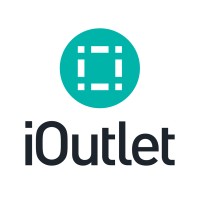Company Details
hgst-a-western-digital-company
3,896
36,110
None
westerndigital.com
0
HGS_2231250
In-progress

HGST, a Western Digital brand Company CyberSecurity Posture
westerndigital.comHGST has been acquired by Western Digital. Please visit Western Digital's company page for the latest company information. HGST is a global leader in data storage, unlocking potential by helping the world harness the power of data. With a deep understanding of industry needs and a changing technology landscape, HGST is driving data center transformation with innovative, proven, smarter storage solutions that optimize capacity, performance, efficiency and reliability with the lowest TCO. Trusted by the world’s largest organizations, HGST’S storage solutions are everywhere, touching lives and enabling possibilities for the enterprise, cloud computing and sophisticated infrastructures in healthcare, energy, finance and government. www.hgst.com We have manufacturing locations in the U.S., Singapore, Thailand, the Philippines and China. Development laboratories are located in San Jose, CA and Rochester, MN, USA; and in Odawara and Fujisawa, Japan. Our sales and technical support offices are strategically located throughout Europe, Asia and North America. Our vision is to lead with innovative and reliable solutions which empower people to create, manage, experience and preserve digital content. Our mission is to sustainably deliver the industry's best customer experience through innovation, product breadth, quality and operational excellence. Some of our posts include forward-looking statements. For more information, read our disclaimer: http://www.hgst.com/forward-looking-statements
Company Details
hgst-a-western-digital-company
3,896
36,110
None
westerndigital.com
0
HGS_2231250
In-progress
Between 750 and 799

 HWDB Global Score (TPRM)
HWDB Global Score (TPRM)XXXX

Description: Customers of Western Digital are being informed of a data breach that exposed their private information. It stopped a number of its services in response to the incident. The business acknowledged that various systems had been compromised by an unauthorised individual. To confirm that threat actors stole sensitive personal information in the March attack, the organisation is notifying customers of data breaches through letters. According to the corporation, they are collaborating with law enforcement to examine the full scope of the occurrence with the help of renowned forensic and security specialists.
Description: Western Digital experienced a ransomware assault, and as a result, it had to suspend some of its services. The company acknowledged that various systems had been compromised by an unauthorised individual. My Cloud, My Cloud Home, My Cloud Home Duo, My Cloud OS5, SanDisk ibi, and SanDisk Ixpand Wireless Charger were all impacted by a service outage encountered by Western Digital. Customer names, shipping and billing addresses, phone numbers, and email addresses were among the information that was exposed. Customer passwords that had been hashed or salted as well as a portion of their credit card details were found in the hacked database, the company noted. Customers of Western Digital are advised to exercise caution when responding to unsolicited mailings that request personal information from them or direct them to a website that does the same. Customers are advised against opening attachments or clicking on links in shady communications.
Description: Western Digital disclosed a critical OS command injection vulnerability (CVE-2025-30247) in multiple My Cloud NAS models, including PR2100, PR4100, EX4100, EX2 Ultra, Mirror Gen 2, DL2100, EX2100, DL4100, and WDBCTLxxxxxx-10. The flaw allows remote attackers to execute arbitrary system commands via crafted HTTP POST requests, potentially leading to unauthorized file access, modification, deletion, user enumeration, or binary execution. While primarily affecting small businesses, home offices, and consumers, exploitation could enable data theft, botnet recruitment, proxy misuse, or ransomware deployment. Two models (DL4100 and DL2100) are end-of-support (EoS), leaving them unpatched. Users are urged to update to firmware 5.31.108 immediately or disconnect devices until patched. Automatic updates were rolled out on September 23, 2025, but manual updates are also available. Failure to patch risks severe compromise of stored data, including potential lateral movement into connected networks or ransomware attacks targeting backups and sensitive files.
Description: Western Digital disclosed a critical **remote code execution (RCE) vulnerability (CVE-2025-30247)** in the firmware of its **My Cloud NAS devices**, affecting models like My Cloud PR2100, PR4100, EX2 Ultra, and others running firmware versions prior to **v5.31.108**. The flaw, an **OS command injection** in the user interface, allows unauthenticated attackers to execute arbitrary system commands via a crafted **HTTP POST request** without user interaction.A successful exploit grants full system control, enabling attackers to **access, encrypt, delete, or modify all stored data**, including backups, project files, and sensitive documents. The compromised device could also serve as a **launchpad for lateral movement** within the same network, risking further breaches of connected systems.While no in-the-wild exploitation has been reported, the vulnerability poses a severe risk to **home and small business users** relying on these devices for storage and backups. Western Digital urged immediate firmware updates, with automatic updates already applied to connected devices. Failure to patch could lead to **data loss, ransomware deployment, or network-wide compromise** if exploited by threat actors.


No incidents recorded for HGST, a Western Digital brand in 2025.
No incidents recorded for HGST, a Western Digital brand in 2025.
No incidents recorded for HGST, a Western Digital brand in 2025.
HWDB cyber incidents detection timeline including parent company and subsidiaries

HGST has been acquired by Western Digital. Please visit Western Digital's company page for the latest company information. HGST is a global leader in data storage, unlocking potential by helping the world harness the power of data. With a deep understanding of industry needs and a changing technology landscape, HGST is driving data center transformation with innovative, proven, smarter storage solutions that optimize capacity, performance, efficiency and reliability with the lowest TCO. Trusted by the world’s largest organizations, HGST’S storage solutions are everywhere, touching lives and enabling possibilities for the enterprise, cloud computing and sophisticated infrastructures in healthcare, energy, finance and government. www.hgst.com We have manufacturing locations in the U.S., Singapore, Thailand, the Philippines and China. Development laboratories are located in San Jose, CA and Rochester, MN, USA; and in Odawara and Fujisawa, Japan. Our sales and technical support offices are strategically located throughout Europe, Asia and North America. Our vision is to lead with innovative and reliable solutions which empower people to create, manage, experience and preserve digital content. Our mission is to sustainably deliver the industry's best customer experience through innovation, product breadth, quality and operational excellence. Some of our posts include forward-looking statements. For more information, read our disclaimer: http://www.hgst.com/forward-looking-statements


Founded in 1997, AAB International BV is an independent wholesale distributor for computer components, consumer electronics and small appliances. From the latest new and “fast moving” items to factory surplus or recertified products, we offer a tailor-made portfolio to PC builders, Distributors,

NCE Computer Group is a full service IT hardware services organization with 30 years of experience in providing custom service and support solutions with a wide variety of options to over 5,000 customer locations nationwide. NCE’s onsite repair and services client base covers the full spectrum of ma

Semicron Systems is a worldwide dealer and supplier of Point of Sale Systems hardware and software, including computers, Cash Register Express and Restaurant pro Express software, remote environmental conditions monitoring and control devices, and age verification devices. Since its establishment in

IQ KIOSK produces custom designed and manufactured interactive kiosk hardware, specifically made for our clients business and user requirements. With over 15 years of experience, the experts at IQ KIOSK have provided interactive kiosk hardware to a vast variety of industries for some of the large

iOutlet, formerly Apple Outlet, was founded out of our Founder’s bedroom in 2013. Michael founded iOutlet on the simple belief that customers need a trustworthy place to buy pre-owned Apple products and take their electronics for repair. We don't like to see people being confused or taken advantage

The Open Technologies LLC has been operating on the Siberian market of computer hardware and digital technologies since 2003. We started rebranding in April 2012 and launched the new trademark - e2e4. Nowadays the Open Technologies retail chain includes seventeen e2e4 outlets in Novosibirsk, Kemer
.png)
Western Digital gets a feeling of what is to come after the company is split into two.
As part of a branding realignment following a series of acquisitions, Western Digital is spinning down the HGST brand.
The Sports Video Group is pleased to announce that HGST, a Western Digital Brand, has renewed its platinum sponsorship. HGST is a provider...

Explore insights on cybersecurity incidents, risk posture, and Rankiteo's assessments.
The official website of HGST, a Western Digital brand is http://www.hgst.com/.
According to Rankiteo, HGST, a Western Digital brand’s AI-generated cybersecurity score is 766, reflecting their Fair security posture.
According to Rankiteo, HGST, a Western Digital brand currently holds 0 security badges, indicating that no recognized compliance certifications are currently verified for the organization.
According to Rankiteo, HGST, a Western Digital brand is not certified under SOC 2 Type 1.
According to Rankiteo, HGST, a Western Digital brand does not hold a SOC 2 Type 2 certification.
According to Rankiteo, HGST, a Western Digital brand is not listed as GDPR compliant.
According to Rankiteo, HGST, a Western Digital brand does not currently maintain PCI DSS compliance.
According to Rankiteo, HGST, a Western Digital brand is not compliant with HIPAA regulations.
According to Rankiteo,HGST, a Western Digital brand is not certified under ISO 27001, indicating the absence of a formally recognized information security management framework.
HGST, a Western Digital brand operates primarily in the Computer Hardware industry.
HGST, a Western Digital brand employs approximately 3,896 people worldwide.
HGST, a Western Digital brand presently has no subsidiaries across any sectors.
HGST, a Western Digital brand’s official LinkedIn profile has approximately 36,110 followers.
HGST, a Western Digital brand is classified under the NAICS code None, which corresponds to Others.
No, HGST, a Western Digital brand does not have a profile on Crunchbase.
Yes, HGST, a Western Digital brand maintains an official LinkedIn profile, which is actively utilized for branding and talent engagement, which can be accessed here: https://www.linkedin.com/company/hgst-a-western-digital-company.
As of November 27, 2025, Rankiteo reports that HGST, a Western Digital brand has experienced 4 cybersecurity incidents.
HGST, a Western Digital brand has an estimated 321 peer or competitor companies worldwide.
Incident Types: The types of cybersecurity incidents that have occurred include Breach, Ransomware and Vulnerability.
Detection and Response: The company detects and responds to cybersecurity incidents through an communication strategy with customers of western digital are advised to exercise caution when responding to unsolicited mailings that request personal information from them or direct them to a website that does the same. customers are advised against opening attachments or clicking on links in shady communications., and third party assistance with forensic and security specialists, and and containment measures with stopped a number of its services, and communication strategy with notifying customers through letters, and and third party assistance with vulnerability privately reported by a researcher, and containment measures with firmware update (v5.31.108) released to patch vulnerability, and remediation measures with urgent advisory for users to update firmware; automatic updates enabled for connected devices, and communication strategy with public advisory, firmware update notifications, email alerts for subscribers, and and third party assistance with security researcher 'w1th0ut' (vulnerability reporter), and containment measures with firmware update (5.31.108), containment measures with recommendation to take devices offline if unpatched, and remediation measures with patching vulnerable endpoints, remediation measures with disabling remote access until patched, and recovery measures with manual update instructions provided, recovery measures with automatic updates enabled since 2025-09-23, and communication strategy with public security advisory, communication strategy with update instructions for manual patching..
Title: Western Digital Ransomware Attack
Description: Western Digital experienced a ransomware assault, resulting in the suspension of some of its services. The company acknowledged that various systems had been compromised by an unauthorized individual. My Cloud, My Cloud Home, My Cloud Home Duo, My Cloud OS5, SanDisk ibi, and SanDisk Ixpand Wireless Charger were all impacted by a service outage encountered by Western Digital. Customer names, shipping and billing addresses, phone numbers, and email addresses were among the information that was exposed. Customer passwords that had been hashed or salted as well as a portion of their credit card details were found in the hacked database, the company noted.
Type: Ransomware
Title: Western Digital Data Breach
Description: Customers of Western Digital are being informed of a data breach that exposed their private information. The business acknowledged that various systems had been compromised by an unauthorised individual. The organisation is notifying customers of data breaches through letters to confirm that threat actors stole sensitive personal information in the March attack.
Type: Data Breach
Threat Actor: Unauthorized individual
Motivation: Data theft
Title: Critical Remote Code Execution Vulnerability in Western Digital My Cloud NAS Devices (CVE-2025-30247)
Description: Western Digital has fixed a critical remote code execution vulnerability (CVE-2025-30247) in the firmware of its My Cloud network-attached storage (NAS) devices. The vulnerability, an OS command injection flaw in the firmware’s user interface, allows remote attackers to execute arbitrary system commands via a specially crafted HTTP POST request without prior authentication or user interaction. Successful exploitation could lead to full system compromise, including unauthorized access, encryption, deletion, or modification of stored data, as well as potential lateral movement to other systems on the same network. Affected devices include My Cloud models running firmware prior to v5.31.108, released on September 23. Western Digital urges users to update their firmware immediately to mitigate the risk.
Date Publicly Disclosed: 2024-09-23
Date Resolved: 2024-09-23
Type: Vulnerability
Attack Vector: Network (HTTP POST request)
Vulnerability Exploited: CVE-2025-30247 (OS Command Injection in Firmware UI)
Title: Western Digital My Cloud NAS Critical OS Command Injection Vulnerability (CVE-2025-30247)
Description: Western Digital has released firmware updates for multiple My Cloud NAS models to patch a critical-severity OS command injection vulnerability (CVE-2025-30247). The flaw, reported by security researcher 'w1th0ut,' allows remote attackers to execute arbitrary system commands via crafted HTTP POST requests to vulnerable endpoints. Exploitation could lead to unauthorized file access, modification, deletion, user enumeration, configuration changes, or binary execution. Affected models include My Cloud PR2100, PR4100, EX4100, EX2 Ultra, Mirror Gen 2, DL2100, EX2100, DL4100, and WDBCTLxxxxxx-10. Users are urged to update to firmware version 5.31.108 immediately or take devices offline if patching is delayed. Two models (DL4100 and DL2100) are end-of-support (EoS) and may lack updates.
Date Publicly Disclosed: 2025-09-23
Type: Vulnerability
Attack Vector: Network (Remote)
Vulnerability Exploited: CVE-2025-30247 (OS Command Injection in My Cloud UI)
Common Attack Types: The most common types of attacks the company has faced is Vulnerability.
Identification of Attack Vectors: The company identifies the attack vectors used in incidents through Firmware UI (OS command injection via HTTP POST request) and Vulnerable HTTP POST endpoints in My Cloud UI.

Data Compromised: Customer names, Shipping and billing addresses, Phone numbers, Email addresses, Hashed or salted passwords, Partial credit card details
Systems Affected: My CloudMy Cloud HomeMy Cloud Home DuoMy Cloud OS5SanDisk ibiSanDisk Ixpand Wireless Charger

Data Compromised: Sensitive personal information

Data Compromised: Potential full access to stored data (if exploited)
Systems Affected: My Cloud PR2100My Cloud PR4100My Cloud EX2 UltraMy Cloud EX4100My Cloud Mirror Gen 2My Cloud EX2100My Cloud DL2100My Cloud DL4100My Cloud WDBCTLxxxxxx-10
Operational Impact: Potential data encryption, deletion, or modification; lateral movement risk to other network systems
Brand Reputation Impact: Potential reputational damage if exploited in the wild

Data Compromised: Potential unauthorized file access, Modification, Deletion, User enumeration
Systems Affected: My Cloud PR2100My Cloud PR4100My Cloud EX4100My Cloud EX2 UltraMy Cloud Mirror Gen 2My Cloud DL2100My Cloud EX2100My Cloud DL4100My Cloud WDBCTLxxxxxx-10
Operational Impact: Potential unauthorized configuration changesBinary executionLoss of cloud access if taken offline
Brand Reputation Impact: Potential reputational damage due to vulnerability in consumer-facing product
Commonly Compromised Data Types: The types of data most commonly compromised in incidents are Customer Names, Shipping And Billing Addresses, Phone Numbers, Email Addresses, Hashed Or Salted Passwords, Partial Credit Card Details, , Sensitive personal information, Potential: All Data Stored On Affected Nas Devices (Documents, Backups, Project Files, Etc.), , Potential: Stored Files (Personal/Cloud Data), User Credentials, Configuration Data and .

Entity Name: Western Digital
Entity Type: Corporation
Industry: Technology

Entity Name: Western Digital
Entity Type: Company
Industry: Technology

Entity Name: Western Digital
Entity Type: Corporation
Industry: Data Storage / Technology
Location: Global (HQ: San Jose, California, USA)
Size: Large (Publicly Traded)
Customers Affected: Users of My Cloud NAS devices with firmware prior to v5.31.108

Entity Name: Western Digital
Entity Type: Corporation
Industry: Data Storage/Technology
Location: Global
Customers Affected: Users of My Cloud NAS devices (small businesses, home offices, individuals)

Communication Strategy: Customers of Western Digital are advised to exercise caution when responding to unsolicited mailings that request personal information from them or direct them to a website that does the same. Customers are advised against opening attachments or clicking on links in shady communications.

Third Party Assistance: Forensic and security specialists
Containment Measures: Stopped a number of its services
Communication Strategy: Notifying customers through letters

Incident Response Plan Activated: True
Third Party Assistance: Vulnerability Privately Reported By A Researcher.
Containment Measures: Firmware update (v5.31.108) released to patch vulnerability
Remediation Measures: Urgent advisory for users to update firmware; automatic updates enabled for connected devices
Communication Strategy: Public advisory, firmware update notifications, email alerts for subscribers

Incident Response Plan Activated: True
Third Party Assistance: Security Researcher 'W1Th0Ut' (Vulnerability Reporter).
Containment Measures: Firmware update (5.31.108)Recommendation to take devices offline if unpatched
Remediation Measures: Patching vulnerable endpointsDisabling remote access until patched
Recovery Measures: Manual update instructions providedAutomatic updates enabled since 2025-09-23
Communication Strategy: Public security advisoryUpdate instructions for manual patching
Third-Party Assistance: The company involves third-party assistance in incident response through Forensic and security specialists, Vulnerability privately reported by a researcher, , Security researcher 'w1th0ut' (vulnerability reporter), .

Type of Data Compromised: Customer names, Shipping and billing addresses, Phone numbers, Email addresses, Hashed or salted passwords, Partial credit card details

Type of Data Compromised: Sensitive personal information

Type of Data Compromised: Potential: all data stored on affected nas devices (documents, backups, project files, etc.)
Sensitivity of Data: Potentially high (depends on user-stored content)
Data Exfiltration: Possible if exploited
Data Encryption: ['Possible unauthorized encryption by attackers']
Personally Identifiable Information: Possible (if stored by users)

Type of Data Compromised: Potential: stored files (personal/cloud data), User credentials, Configuration data
Sensitivity of Data: Potentially high (personal files, backups, media)
Data Exfiltration: Possible (historical exploits on NAS devices include data harvesting)
Personally Identifiable Information: Possible (if stored on device)
Prevention of Data Exfiltration: The company takes the following measures to prevent data exfiltration: Urgent advisory for users to update firmware; automatic updates enabled for connected devices, , Patching vulnerable endpoints, Disabling remote access until patched, .
Handling of PII Incidents: The company handles incidents involving personally identifiable information (PII) through by stopped a number of its services, firmware update (v5.31.108) released to patch vulnerability, , firmware update (5.31.108), recommendation to take devices offline if unpatched and .

Data Encryption: ['Potential (if exploited for ransomware)']
Data Exfiltration: ['Potential (if exploited)']
Data Recovery from Ransomware: The company recovers data encrypted by ransomware through Manual update instructions provided, Automatic updates enabled since 2025-09-23, .

Lessons Learned: Proactive vulnerability disclosure and rapid patching are critical for IoT/NAS devices, which often store sensitive data and can serve as entry points for broader network compromises. Automatic firmware updates can significantly reduce exposure windows.

Lessons Learned: Critical importance of timely patching for consumer-facing IoT/NAS devices, Need for clear end-of-support (EoS) mitigation strategies, Risks of remote command execution in network-attached storage systems

Recommendations: Immediately update My Cloud NAS devices to firmware v5.31.108 or later., Enable automatic firmware updates where possible., Isolate NAS devices on separate network segments to limit lateral movement risk., Monitor for unusual access patterns or unauthorized commands on NAS devices., Regularly audit stored data sensitivity and implement backup strategies to mitigate ransomware risks.Immediately update My Cloud NAS devices to firmware v5.31.108 or later., Enable automatic firmware updates where possible., Isolate NAS devices on separate network segments to limit lateral movement risk., Monitor for unusual access patterns or unauthorized commands on NAS devices., Regularly audit stored data sensitivity and implement backup strategies to mitigate ransomware risks.Immediately update My Cloud NAS devices to firmware v5.31.108 or later., Enable automatic firmware updates where possible., Isolate NAS devices on separate network segments to limit lateral movement risk., Monitor for unusual access patterns or unauthorized commands on NAS devices., Regularly audit stored data sensitivity and implement backup strategies to mitigate ransomware risks.Immediately update My Cloud NAS devices to firmware v5.31.108 or later., Enable automatic firmware updates where possible., Isolate NAS devices on separate network segments to limit lateral movement risk., Monitor for unusual access patterns or unauthorized commands on NAS devices., Regularly audit stored data sensitivity and implement backup strategies to mitigate ransomware risks.Immediately update My Cloud NAS devices to firmware v5.31.108 or later., Enable automatic firmware updates where possible., Isolate NAS devices on separate network segments to limit lateral movement risk., Monitor for unusual access patterns or unauthorized commands on NAS devices., Regularly audit stored data sensitivity and implement backup strategies to mitigate ransomware risks.

Recommendations: Immediately update My Cloud NAS devices to firmware 5.31.108, Take unpatched devices offline to prevent exploitation, Disable remote access if patching is delayed, Monitor for unauthorized access or suspicious activity, Consider replacing end-of-support (EoS) devices (DL2100, DL4100), Enable automatic updates for future vulnerabilitiesImmediately update My Cloud NAS devices to firmware 5.31.108, Take unpatched devices offline to prevent exploitation, Disable remote access if patching is delayed, Monitor for unauthorized access or suspicious activity, Consider replacing end-of-support (EoS) devices (DL2100, DL4100), Enable automatic updates for future vulnerabilitiesImmediately update My Cloud NAS devices to firmware 5.31.108, Take unpatched devices offline to prevent exploitation, Disable remote access if patching is delayed, Monitor for unauthorized access or suspicious activity, Consider replacing end-of-support (EoS) devices (DL2100, DL4100), Enable automatic updates for future vulnerabilitiesImmediately update My Cloud NAS devices to firmware 5.31.108, Take unpatched devices offline to prevent exploitation, Disable remote access if patching is delayed, Monitor for unauthorized access or suspicious activity, Consider replacing end-of-support (EoS) devices (DL2100, DL4100), Enable automatic updates for future vulnerabilitiesImmediately update My Cloud NAS devices to firmware 5.31.108, Take unpatched devices offline to prevent exploitation, Disable remote access if patching is delayed, Monitor for unauthorized access or suspicious activity, Consider replacing end-of-support (EoS) devices (DL2100, DL4100), Enable automatic updates for future vulnerabilitiesImmediately update My Cloud NAS devices to firmware 5.31.108, Take unpatched devices offline to prevent exploitation, Disable remote access if patching is delayed, Monitor for unauthorized access or suspicious activity, Consider replacing end-of-support (EoS) devices (DL2100, DL4100), Enable automatic updates for future vulnerabilities
Key Lessons Learned: The key lessons learned from past incidents are Proactive vulnerability disclosure and rapid patching are critical for IoT/NAS devices, which often store sensitive data and can serve as entry points for broader network compromises. Automatic firmware updates can significantly reduce exposure windows.Critical importance of timely patching for consumer-facing IoT/NAS devices,Need for clear end-of-support (EoS) mitigation strategies,Risks of remote command execution in network-attached storage systems.

Source: Western Digital

Source: Western Digital Security Advisory

Source: Western Digital Security Advisory

Source: Firmware Update Instructions

Source: Manual Update Firmware Downloads
Additional Resources: Stakeholders can find additional resources on cybersecurity best practices at and Source: Western Digital, and Source: Western Digital Security Advisory, and Source: Western Digital Security Advisory, and Source: Firmware Update Instructions, and Source: Manual Update Firmware Downloads.

Investigation Status: Ongoing

Investigation Status: Resolved (Patch released; no known exploitation in the wild)

Investigation Status: Resolved (Patch released)
Communication of Investigation Status: The company communicates the status of incident investigations to stakeholders through Customers of Western Digital are advised to exercise caution when responding to unsolicited mailings that request personal information from them or direct them to a website that does the same. Customers are advised against opening attachments or clicking on links in shady communications., Notifying customers through letters, Public Advisory, Firmware Update Notifications, Email Alerts For Subscribers, Public Security Advisory and Update Instructions For Manual Patching.

Customer Advisories: Customers of Western Digital are advised to exercise caution when responding to unsolicited mailings that request personal information from them or direct them to a website that does the same. Customers are advised against opening attachments or clicking on links in shady communications.

Customer Advisories: Notifying customers through letters

Stakeholder Advisories: Public Advisory Issued; Firmware Update Notifications Sent To Users.
Customer Advisories: Users urged to update firmware via notifications and public communications

Stakeholder Advisories: Public advisory issued with patching instructions
Customer Advisories: Users notified via device updates and public channels
Advisories Provided: The company provides the following advisories to stakeholders and customers following an incident: were Customers of Western Digital are advised to exercise caution when responding to unsolicited mailings that request personal information from them or direct them to a website that does the same. Customers are advised against opening attachments or clicking on links in shady communications., Notifying customers through letters, Public Advisory Issued; Firmware Update Notifications Sent To Users, Users Urged To Update Firmware Via Notifications And Public Communications, , Public advisory issued with patching instructions and Users notified via device updates and public channels.

Entry Point: Firmware Ui (Os Command Injection Via Http Post Request),
Backdoors Established: ['Potential if exploited']
High Value Targets: Stored Data On Nas Devices; Potential Pivot To Other Network Systems,
Data Sold on Dark Web: Stored Data On Nas Devices; Potential Pivot To Other Network Systems,

Entry Point: Vulnerable HTTP POST endpoints in My Cloud UI
High Value Targets: Stored Files, User Credentials, Device Configurations,
Data Sold on Dark Web: Stored Files, User Credentials, Device Configurations,

Root Causes: Os Command Injection Vulnerability In Firmware Ui Due To Insufficient Input Validation,
Corrective Actions: Released Patched Firmware (V5.31.108) To Address The Vulnerability,

Root Causes: Os Command Injection Vulnerability In User Interface, Insufficient Input Validation For Http Post Requests, Lack Of Mitigation For End-Of-Support (Eos) Devices,
Corrective Actions: Released Firmware Patch (5.31.108) For Supported Devices, Public Disclosure And Patching Instructions, Recommendation To Isolate Or Replace Eos Devices,
Post-Incident Analysis Process: The company's process for conducting post-incident analysis is described as Forensic and security specialists, Vulnerability Privately Reported By A Researcher, , Security Researcher 'W1Th0Ut' (Vulnerability Reporter), .
Corrective Actions Taken: The company has taken the following corrective actions based on post-incident analysis: Released Patched Firmware (V5.31.108) To Address The Vulnerability, , Released Firmware Patch (5.31.108) For Supported Devices, Public Disclosure And Patching Instructions, Recommendation To Isolate Or Replace Eos Devices, .
Last Attacking Group: The attacking group in the last incident was an Unauthorized individual.
Most Recent Incident Publicly Disclosed: The most recent incident publicly disclosed was on 2025-09-23.
Most Recent Incident Resolved: The most recent incident resolved was on 2024-09-23.
Most Significant Data Compromised: The most significant data compromised in an incident were Customer names, Shipping and billing addresses, Phone numbers, Email addresses, Hashed or salted passwords, Partial credit card details, , Sensitive personal information, Potential full access to stored data (if exploited), , Potential unauthorized file access, Modification, Deletion, User enumeration and .
Most Significant System Affected: The most significant system affected in an incident was My CloudMy Cloud HomeMy Cloud Home DuoMy Cloud OS5SanDisk ibiSanDisk Ixpand Wireless Charger and My Cloud PR2100My Cloud PR4100My Cloud EX2 UltraMy Cloud EX4100My Cloud Mirror Gen 2My Cloud EX2100My Cloud DL2100My Cloud DL4100My Cloud WDBCTLxxxxxx-10 and My Cloud PR2100My Cloud PR4100My Cloud EX4100My Cloud EX2 UltraMy Cloud Mirror Gen 2My Cloud DL2100My Cloud EX2100My Cloud DL4100My Cloud WDBCTLxxxxxx-10.
Third-Party Assistance in Most Recent Incident: The third-party assistance involved in the most recent incident was Forensic and security specialists, vulnerability privately reported by a researcher, , security researcher 'w1th0ut' (vulnerability reporter), .
Containment Measures in Most Recent Incident: The containment measures taken in the most recent incident were Stopped a number of its services, Firmware update (v5.31.108) released to patch vulnerability and Firmware update (5.31.108)Recommendation to take devices offline if unpatched.
Most Sensitive Data Compromised: The most sensitive data compromised in a breach were Email addresses, Hashed or salted passwords, Potential unauthorized file access, Partial credit card details, Deletion, User enumeration, Customer names, Modification, Shipping and billing addresses, Potential full access to stored data (if exploited), Sensitive personal information and Phone numbers.
Most Significant Lesson Learned: The most significant lesson learned from past incidents was Risks of remote command execution in network-attached storage systems.
Most Significant Recommendation Implemented: The most significant recommendation implemented to improve cybersecurity was Consider replacing end-of-support (EoS) devices (DL2100, DL4100), Monitor for unauthorized access or suspicious activity, Isolate NAS devices on separate network segments to limit lateral movement risk., Enable automatic firmware updates where possible., Monitor for unusual access patterns or unauthorized commands on NAS devices., Disable remote access if patching is delayed, Enable automatic updates for future vulnerabilities, Immediately update My Cloud NAS devices to firmware 5.31.108, Regularly audit stored data sensitivity and implement backup strategies to mitigate ransomware risks., Immediately update My Cloud NAS devices to firmware v5.31.108 or later. and Take unpatched devices offline to prevent exploitation.
Most Recent Source: The most recent source of information about an incident are Firmware Update Instructions, Manual Update Firmware Downloads, Western Digital and Western Digital Security Advisory.
Current Status of Most Recent Investigation: The current status of the most recent investigation is Ongoing.
Most Recent Stakeholder Advisory: The most recent stakeholder advisory issued was Public advisory issued; firmware update notifications sent to users, Public advisory issued with patching instructions, .
Most Recent Customer Advisory: The most recent customer advisory issued were an Customers of Western Digital are advised to exercise caution when responding to unsolicited mailings that request personal information from them or direct them to a website that does the same. Customers are advised against opening attachments or clicking on links in shady communications., Notifying customers through letters, Users urged to update firmware via notifications and public communications and Users notified via device updates and public channels.
Most Recent Entry Point: The most recent entry point used by an initial access broker was an Vulnerable HTTP POST endpoints in My Cloud UI.
Most Significant Root Cause: The most significant root cause identified in post-incident analysis was OS command injection vulnerability in firmware UI due to insufficient input validation, OS command injection vulnerability in user interfaceInsufficient input validation for HTTP POST requestsLack of mitigation for end-of-support (EoS) devices.
Most Significant Corrective Action: The most significant corrective action taken based on post-incident analysis was Released patched firmware (v5.31.108) to address the vulnerability, Released firmware patch (5.31.108) for supported devicesPublic disclosure and patching instructionsRecommendation to isolate or replace EoS devices.
.png)
Angular is a development platform for building mobile and desktop web applications using TypeScript/JavaScript and other languages. Prior to versions 19.2.16, 20.3.14, and 21.0.1, there is a XSRF token leakage via protocol-relative URLs in angular HTTP clients. The vulnerability is a Credential Leak by App Logic that leads to the unauthorized disclosure of the Cross-Site Request Forgery (XSRF) token to an attacker-controlled domain. Angular's HttpClient has a built-in XSRF protection mechanism that works by checking if a request URL starts with a protocol (http:// or https://) to determine if it is cross-origin. If the URL starts with protocol-relative URL (//), it is incorrectly treated as a same-origin request, and the XSRF token is automatically added to the X-XSRF-TOKEN header. This issue has been patched in versions 19.2.16, 20.3.14, and 21.0.1. A workaround for this issue involves avoiding using protocol-relative URLs (URLs starting with //) in HttpClient requests. All backend communication URLs should be hardcoded as relative paths (starting with a single /) or fully qualified, trusted absolute URLs.
Forge (also called `node-forge`) is a native implementation of Transport Layer Security in JavaScript. An Uncontrolled Recursion vulnerability in node-forge versions 1.3.1 and below enables remote, unauthenticated attackers to craft deep ASN.1 structures that trigger unbounded recursive parsing. This leads to a Denial-of-Service (DoS) via stack exhaustion when parsing untrusted DER inputs. This issue has been patched in version 1.3.2.
Forge (also called `node-forge`) is a native implementation of Transport Layer Security in JavaScript. An Integer Overflow vulnerability in node-forge versions 1.3.1 and below enables remote, unauthenticated attackers to craft ASN.1 structures containing OIDs with oversized arcs. These arcs may be decoded as smaller, trusted OIDs due to 32-bit bitwise truncation, enabling the bypass of downstream OID-based security decisions. This issue has been patched in version 1.3.2.
Suricata is a network IDS, IPS and NSM engine developed by the OISF (Open Information Security Foundation) and the Suricata community. Prior to versions 7.0.13 and 8.0.2, working with large buffers in Lua scripts can lead to a stack overflow. Users of Lua rules and output scripts may be affected when working with large buffers. This includes a rule passing a large buffer to a Lua script. This issue has been patched in versions 7.0.13 and 8.0.2. A workaround for this issue involves disabling Lua rules and output scripts, or making sure limits, such as stream.depth.reassembly and HTTP response body limits (response-body-limit), are set to less than half the stack size.
Suricata is a network IDS, IPS and NSM engine developed by the OISF (Open Information Security Foundation) and the Suricata community. In versions from 8.0.0 to before 8.0.2, a NULL dereference can occur when the entropy keyword is used in conjunction with base64_data. This issue has been patched in version 8.0.2. A workaround involves disabling rules that use entropy in conjunction with base64_data.

Get company history
















Every week, Rankiteo analyzes billions of signals to give organizations a sharper, faster view of emerging risks. With deeper, more actionable intelligence at their fingertips, security teams can outpace threat actors, respond instantly to Zero-Day attacks, and dramatically shrink their risk exposure window.
Identify exposed access points, detect misconfigured SSL certificates, and uncover vulnerabilities across the network infrastructure.
Gain visibility into the software components used within an organization to detect vulnerabilities, manage risk, and ensure supply chain security.
Monitor and manage all IT assets and their configurations to ensure accurate, real-time visibility across the company's technology environment.
Leverage real-time insights on active threats, malware campaigns, and emerging vulnerabilities to proactively defend against evolving cyberattacks.




